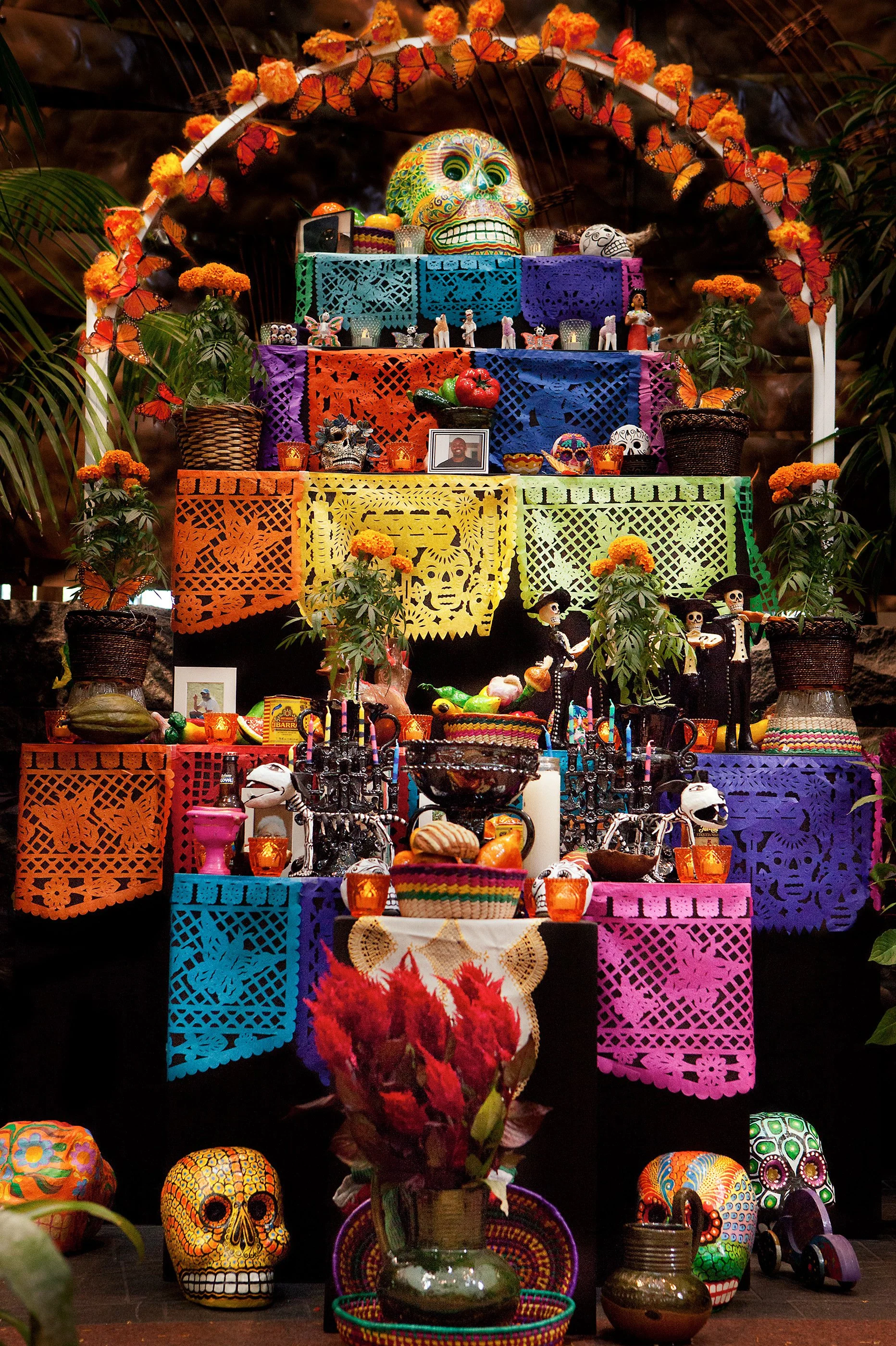
Curated by Leea Mechling and Created by Janette Núñez and Rebecca Wells
Day of the Dead Virtual Exhibition Est. 2021
Dia De Los Muertos (Day of the Dead) celebrates the cycle of life and death. Celebrated from October 28th to November 2nd, home altars are created with offerings for departed loved ones. Originating in Mexico and celebrated across Latin America, many feel that death is a special occasion, but with elements of celebration, because the soul is passing into another life. Plans for the festival are made throughout the year, including gathering the goods to be offered to the dead. A program of music and dance also accompanies the event.
Altars are built differently based on the region and available supplies, however, there are several aspects that are commonly found on an ofrenda. To represent heaven, purgatory, and earth, various levels are created. An arch atop the altar represents the spirit world's entrance (and exit). To assist in attracting those who have passed to the altar, the deceased's favorite foods are placed as an offering alongside their photographs and personal belongings. Candles and Cempazchitl, or marigolds, serve as a guide for those who have passed, along with salt to prevent the bodies from becoming corrupted as they pass. Sugar skulls are used to represent the deceased, while water is used to quench the soul's thirst following a long journey. Finally, papel picado, or chiseled paper, is used to surround the altar to symbolize the union of life, death, and the wind.
The Austin Museum of Popular Culture has chosen this time to honor people who’ve affected Austin’s culture and have passed away. AusPop founder, Henry Gonzalez, started the memorial wall in 2004 with one photo honoring Austin artist Ken Featherston. Since that time AusPop has annually added musicians, artists, philanthropists, photographers, and friends who were involved in the production side of the arts. Please join us in celebrating the lives of the individuals honored in this year’s installation.